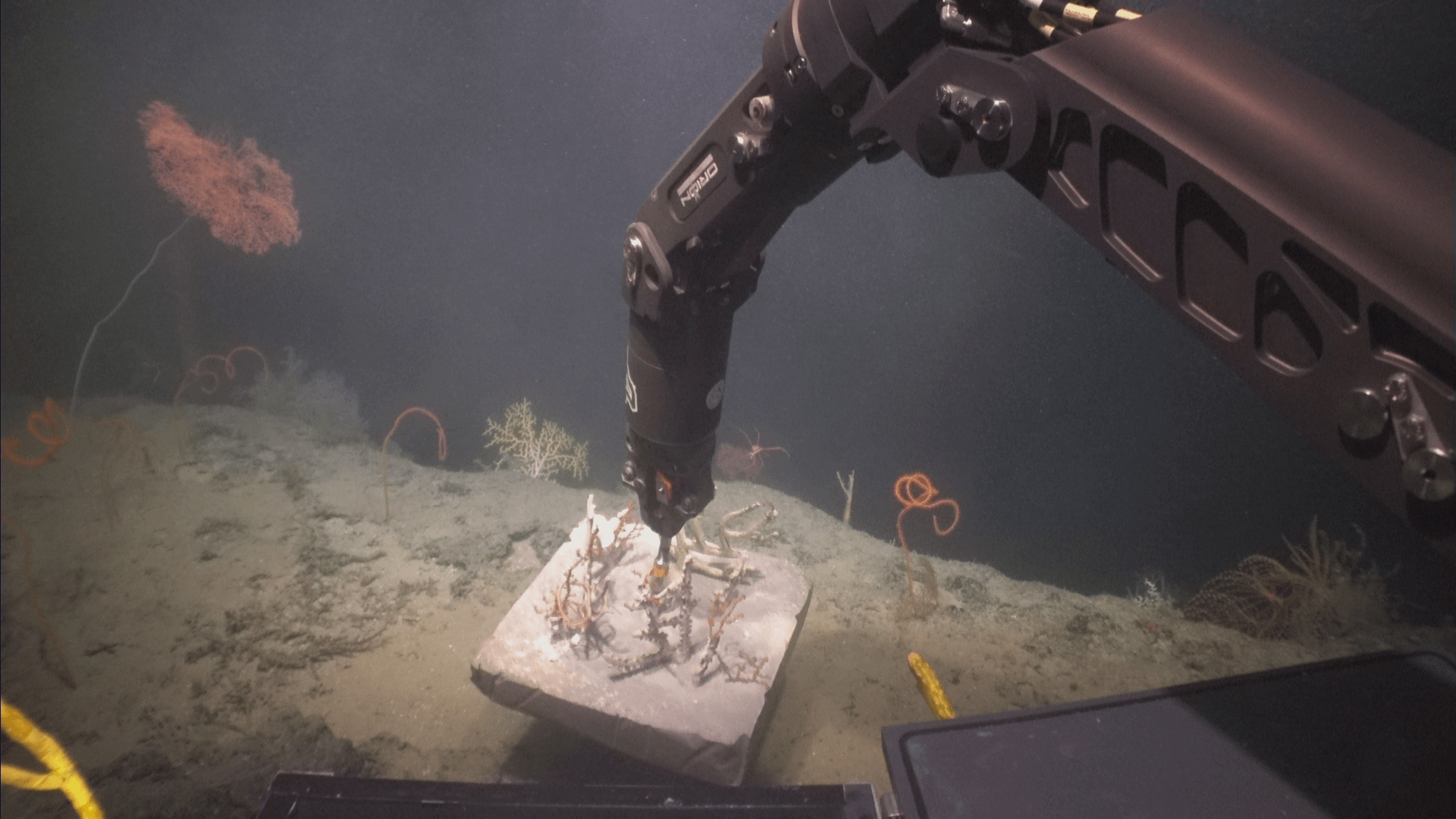In 2010, the Deepwater Horizon oil spill released an estimated 134 million gallons of oil into the northern Gulf of Mexico, injuring more than 770 square miles of deep-sea habitat. As part of the larger effort to understand and restore mesophotic and deep benthic communities that were injured by the spill, NOAA’s National Centers for Coastal Ocean Science and partners recently surveyed and characterized coral communities along the West Florida Escarpment between 1,500 – 2,500 meters, and developed husbandry and outplanting techniques for deep corals.

Production of new coral colonies by fragmentation of established colonies is used to accelerate coral tissue growth and restoration of shallow water corals. To test this approach for deep corals, scientists from Temple University brought corals up from a depth of 1,500 meters, cut them into several fragments, attached them to a clay model using a non-toxic marine epoxy putty, and then returned them to the seafloor. The team will return in a year to measure survival and growth rate of these fragments, as well as the settlement of other corals onto the clay model. Two brittle stars that were curled around the corals when they were brought up were also returned to the reef. The brittle stars, which have a positive symbiotic relationship with the coral, may increase their chances of survival.

The scientists onboard characterized the environmental conditions under which deep corals thrive by collecting water adjacent to corals and at various depths throughout the water column. The water was then analyzed for dissolved nutrients, pH, oxygen, temperature, salinity, dissolved organic carbon, and trace elements in the water. Knowing and replicating the conditions under which corals grow in the wild will help to grow the corals in the lab and will inform restoration efforts. The team also recovered and redeployed a benthic lander device, an autonomous observation platform that has been recording environmental conditions since its initial deployment during a mission by the NOAA Ship Nancy Foster in 2023.
The teams have been successful at caring for and propagating corals collected at mesophotic depths, and are developing best practices for collecting, transporting, and holding corals collected below 1,000 meters which are more challenging to care for in labs. Ongoing efforts are focused on reducing trauma during collection and transport by maintaining cold temperatures and low oxygen, eliminating exposure to surface water, air, and direct sunlight. Maintaining deep corals in the lab will help to understand their biology, growth rate, and feeding, all of which are largely unknown.

The Mesophotic and Deep Benthic Communities restoration projects are focused on mapping and habitat modeling, coral propagation, habitat assessment, and active management of these resources in the northern Gulf of Mexico. NOAA and the Department of the Interior, as the lead implementing trustees for these projects, coordinate a multidisciplinary group of partners to plan and implement them, including more than 100 days at sea each year to complete crucial field work to inform and conduct restoration activities.
This expedition involved partners from NOAA, the U.S. Geological Survey, Temple University, the Smithsonian National Museum of Natural History, Lehigh University, the University of Rhode Island, the Florida Institute of Oceanography and its host Institution, the University of South Florida.
